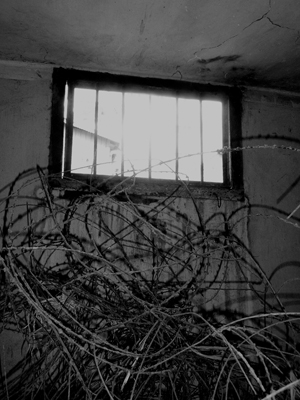
“Force, hatred, history … all that.”
Yes, all that. What has become almost a given in the history of crimes against humanity is the seeming inevitability of it all. There is, in fact, so much violence, that it sometimes takes an effort to be shocked at least one more time.
But the right to claim oneself a survivor: that is not at all self-evident.
Despite your blindfold, you must prove where the victimization took place for it to become legitimate, verified, recognized as real.
At stake is not only who holds claim to recognition as a survivor but also who holds claim to history. Where can historical certainty be established with so much time gone before a crime is recognized? That is not to be glossed over. Are the victims still the same people? Is the accused? What about the crime? If truth is an interpretation, then crimes committed during wartime are the most subject to it. There rarely is the exacting proof required to show such violence occurred.
And even so, proof does not heal.
Here, is a place for this other kind of testimony. The kind to be given by anyone, anywhere, and at all times. Captured in works of art, healing and reconciliation come from individual voices and visions that form part of our deeper collective understanding about violence.
Maybe art is only a story that can never be told the same way twice. It is part of another tradition. Its language is not the language of fact. These things are simply not believed, or true.
But, it is what helps.
And, it is what lasts.
Content by T. Woodson.
Format by Nadhir Khoubeieb.
Website by Websy Daisy.
